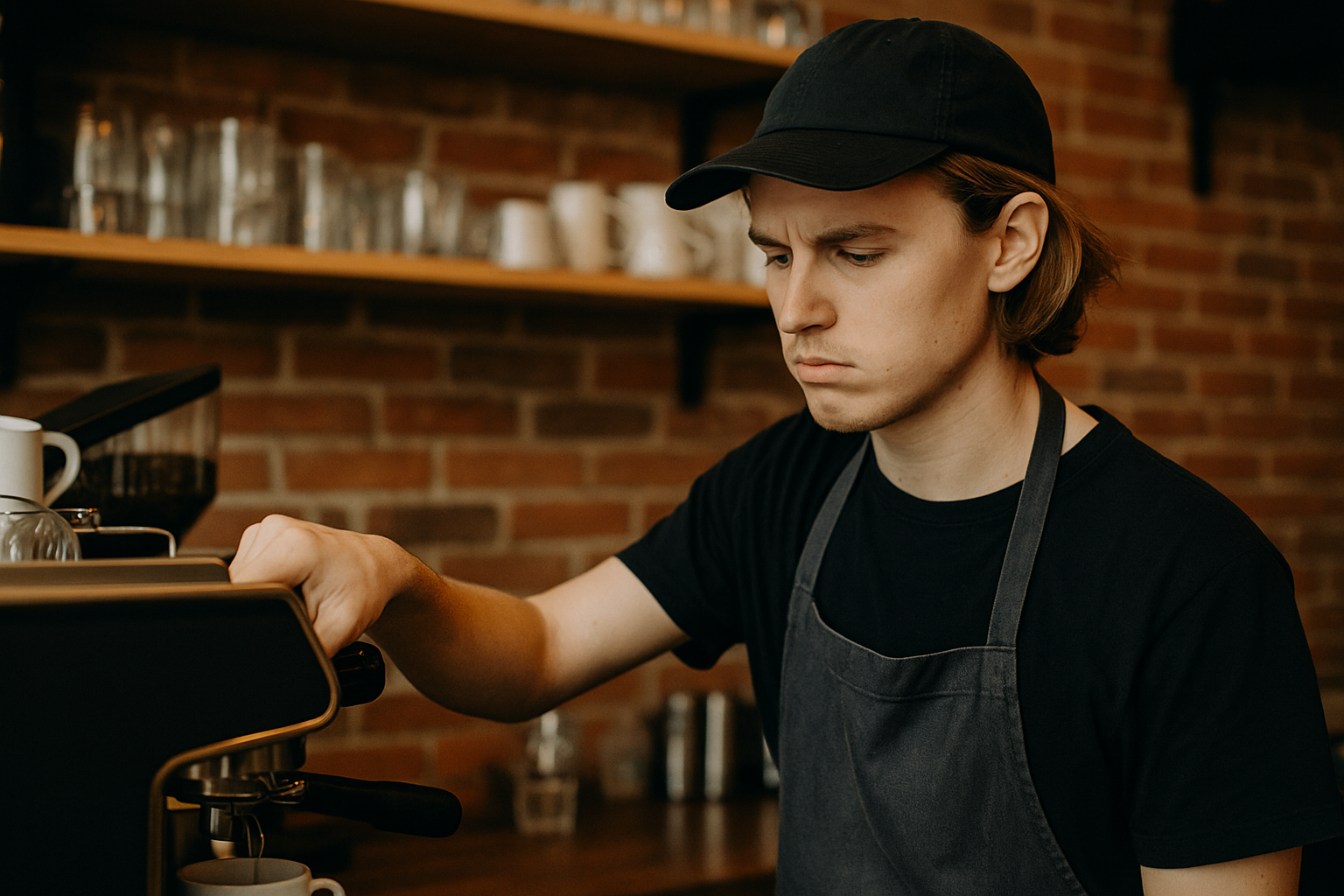Starting a career as a barista can be exciting, but it also comes with a steep learning curve. While passion and curiosity are essential, the beginning of the journey is often marked by avoidable mistakes.
These errors can affect the quality of the coffee you serve, your relationships at work, and even your growth in the industry.
Here are seven common mistakes that beginner baristas make — and how to avoid them.
1. Not Understanding the Coffee Beans
One of the most frequent mistakes beginners make is treating all coffee beans the same. Coffee is a complex product. The origin, roast level, and freshness of the beans significantly impact the flavor profile of the final drink.
New baristas often overlook the importance of knowing whether the bean is a single origin or a blend, light or dark roasted. Each requires a slightly different approach in brewing to bring out the best in flavor.
To avoid this, always ask questions about the beans you are using. Learn about their background, and if possible, taste them brewed in different ways.
2. Skipping Grinder Adjustments
Espresso brewing relies on precision, and the grind size is one of the most critical factors. New baristas sometimes set the grinder in the morning and leave it unchanged for the rest of the day.
However, humidity, bean freshness, and machine temperature can change over time, affecting extraction. Ignoring this will lead to inconsistent drinks.
A skilled barista tests the espresso shot regularly and adjusts the grinder when needed. Get into the habit of checking the flow rate and timing throughout your shift.
3. Improper Tamping Technique
Tamping may seem simple, but doing it incorrectly can ruin the espresso. Pressing too hard, too soft, or unevenly will result in channeling — when water flows through the puck unevenly.
New baristas might tamp with inconsistent pressure or skip the step entirely during busy hours. This mistake can lead to weak, bitter, or sour espresso shots.
The key is to practice consistent, level tamping with the right pressure. Many shops use tamping mats and levelers to help beginners improve their technique.
4. Neglecting Cleanliness
An often-overlooked aspect of being a great barista is cleanliness. Beginners sometimes forget to purge the steam wand after frothing milk or clean the portafilter after each use.
Dirty equipment doesn’t just look bad — it can seriously affect the flavor of the coffee. Milk residue can clog steam wands, and leftover grinds can cause stale-tasting espresso.
Make it a habit to clean as you go. A tidy station is not only more efficient but also reflects professionalism and care.
5. Rushing the Milk Steaming Process
Steaming milk is an art that takes time to perfect. New baristas often focus too much on the espresso and neglect the milk. The result? Burnt, bubbly, or flat milk that ruins the drink.
Steaming milk too hot or not aerating it properly leads to poor texture and taste. This is especially noticeable in drinks like cappuccinos and lattes, where microfoam is key.
Always keep your thermometer handy and aim for around 60–65°C (140–150°F). Pay attention to the sound of the steam wand and practice your angles to get silky microfoam.
6. Not Asking for Feedback
Many beginner baristas fear criticism and avoid asking for feedback. They might think it shows weakness or incompetence, but the truth is quite the opposite.
Constructive feedback helps you grow faster. It identifies blind spots and helps refine your technique. Avoiding it keeps you stuck in bad habits.
Approach your trainer, supervisor, or even experienced co-workers and ask, “How can I improve?” Most professionals respect someone eager to learn and will be happy to help.
7. Overcomplicating the Basics
Excited by latte art videos and specialty recipes, beginners sometimes jump ahead to advanced techniques before mastering the fundamentals. While creativity is welcome, skipping the basics is a costly error.
You need to understand espresso extraction, milk steaming, and drink building at a foundational level. These basics are what ensure consistency and quality in every cup.
Stick to perfecting one drink at a time. Once your cappuccino or espresso is solid, then start experimenting with advanced pours or alternative brewing methods.
Learning from Mistakes Is Part of the Journey
Making mistakes is part of learning, especially in a hands-on profession like being a barista. What sets great baristas apart is how they respond to those mistakes — by reflecting, asking questions, and being open to feedback.
Remember, even the most seasoned baristas once struggled with things like tamping, grinder settings, or steaming milk. It’s through repetition and reflection that you become truly skilled.
Tips to Accelerate Your Learning Curve
If you’re serious about improving, here are a few extra habits to speed up your growth:
Keep a coffee journal: Track shots, grind settings, and results. This helps you understand cause and effect.
Watch and learn: Observe your more experienced colleagues. Pay attention to how they handle busy times, customer interactions, and quality control.
Take initiative: Ask to shadow someone or take on new responsibilities like opening or closing shifts. These offer valuable learning moments.
Taste everything: Taste the drinks you make (when allowed), and also try drinks made by others. Learning to taste critically is vital.
Read and research: Dive into books, blogs, and videos from reputable coffee professionals. Stay updated with new trends and standards in the industry.
You’re Not Just Making Coffee — You’re Creating Experiences
At the end of the day, your role as a barista goes beyond simply making espresso. You’re part of someone’s morning routine, part of a business’s success, and a bridge between craft and customer.
By avoiding these common beginner mistakes, you not only produce better coffee but also grow your reputation and confidence. Every shift becomes a chance to learn, improve, and express your passion for coffee.
Starting strong as a barista means mastering the basics, being open to feedback, and staying committed to your craft. Embrace the learning process, and you’ll find that your mistakes will become your most valuable lessons.

Marcelo Rodrigues is a passionate barista with over 7 years of experience in specialty coffee. He’s worked in top cafés, led barista training sessions, and now shares practical tips to help beginners and coffee lovers improve their skills. Through this blog, Marcel makes the world of coffee more accessible—one cup at a time.

